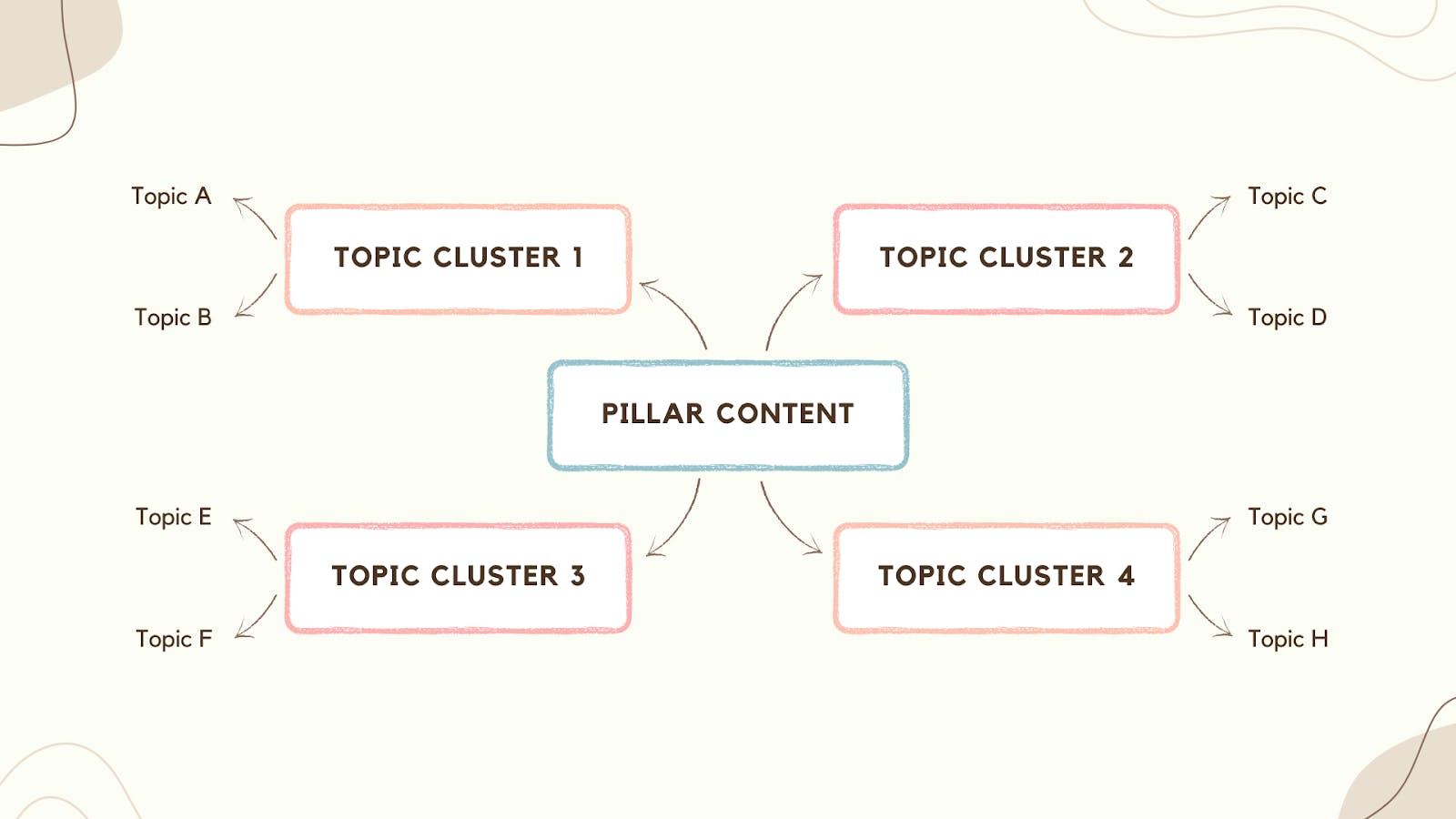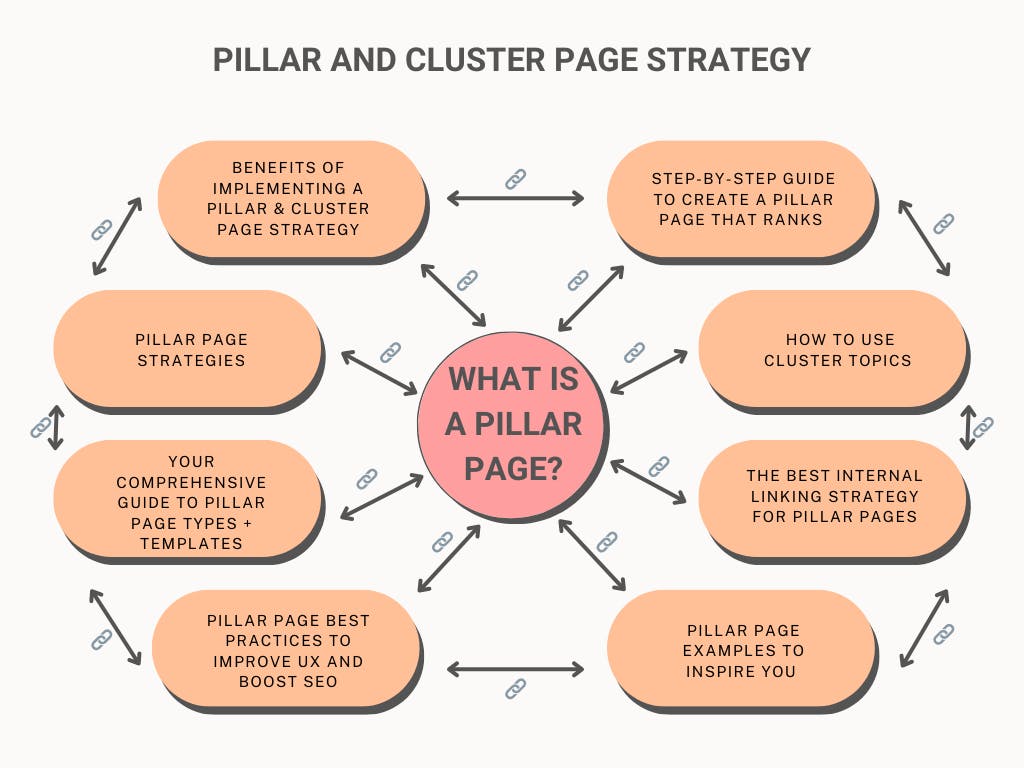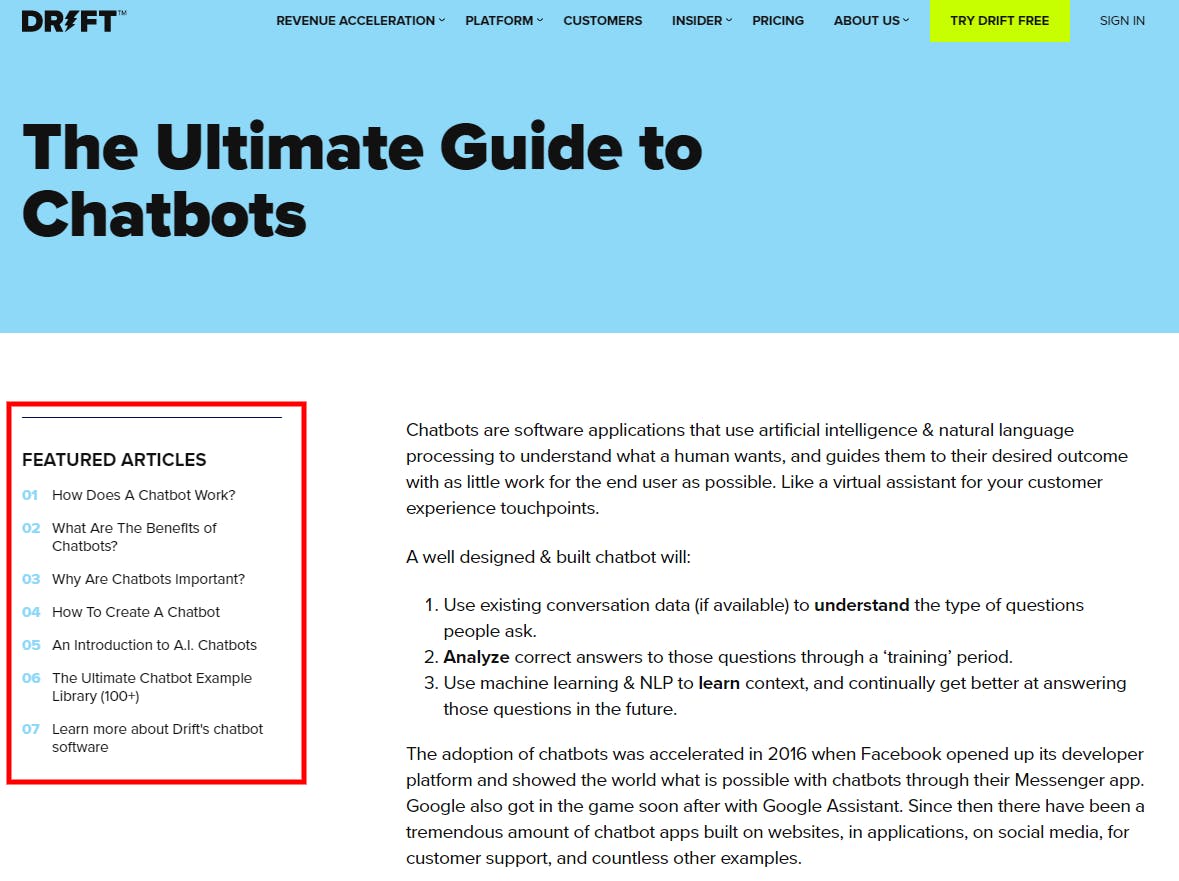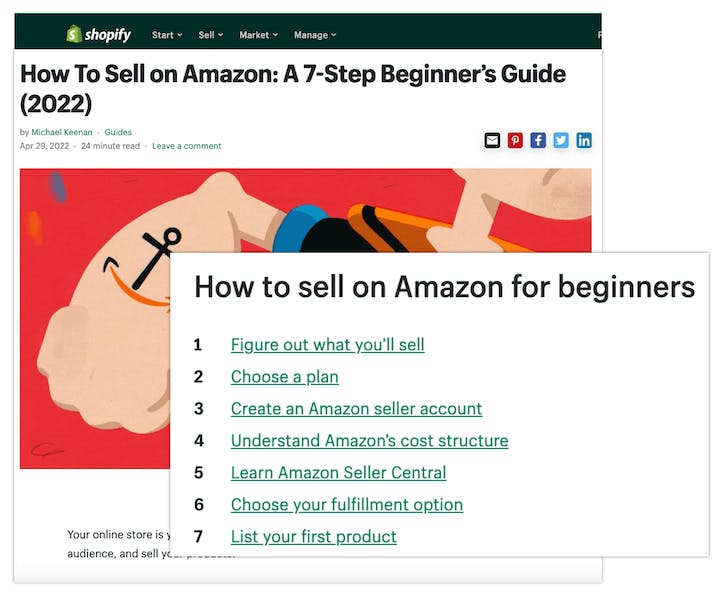What is a Pillar Page? Best Practices and Examples
Feb 15th, 2024

Contents
What is a pillar page?
Best practices in creating pillar pages
Examples of outstanding pillar pages
The field of search engine optimization is constantly changing because of the fast development of algorithms. It might be challenging to stay up to date with the newest blog optimization techniques to get your site ranked on the first page of SERPs. Traditional search engine optimization techniques have been less effective because of recent changes in human search behavior and technological improvements.
A notable aspect of this change is the transformation in the way people conduct online searches. The prevalence of more conversational search queries is on the rise, with 64% of searches consisting of four words or more. This shift is partly attributed to the increasing popularity of voice search, which accounts for 20% of mobile Google searches.
In response to these changes, an effective SEO strategy now involves implementing the topic cluster and pillar page model. This model requires organizing websites according to various main topics, with interconnected blog posts addressing specific long-tail keywords. The objective is to cover a wide range of searches related to a particular subject.
For bloggers and SEO professionals, this means creating and organizing content that not only aligns with search engine algorithms but also caters to users’ evolving preferences and search behaviors. Let us discuss this strategy in more detail.
What is a pillar page?
A pillar page is comprehensive, in-depth content that covers a general topic within an industry or niche and includes links to related articles with additional information. It serves as the central hub or cornerstone for a specific theme. Pillar pages are typically long, detailed, and well-researched articles that provide a thorough overview of a topic. They are usually optimized for a primary keyword that is highly relevant to the overarching theme.
Pillar pages are typically longer than blog posts because they cover every aspect of the subject you want to rank for. However, they don’t delve into extensive detail. This is where cluster content comes into play.

Topic clusters are groups of interlinked content that revolve around central pillar pages. They consist of multiple subtopics or articles that explain specific details of the broader theme covered by the pillar page. Each subtopic within a cluster is usually a short, more focused piece of content that addresses a specific keyword or question related to the chief pillar page's theme.
These cluster pieces link back to the pillar page and, importantly, to each other, forming a content ecosystem. The pillar page and topic cluster model help improve the website's SEO by establishing a clear content hierarchy and internal linking structure. The strategic interlinking is designed not only for the benefit of search engines but also to create a seamless, engaging journey for the reader.
The purpose of developing a pillar page and topic clusters is to design an extensive guide for users while establishing authority in a particular niche. Search engines, like Google, often reward websites that provide well-organized content on specific topics. The interconnected nature of topic clusters helps search engines understand the context and relationships between different pieces of content, which can positively impact search rankings.
In summary, pillar pages and topic clusters are content marketing strategies designed to improve both SEO and user experience by organizing and linking related content on a website.
Best practices in creating pillar pages
In the following paragraphs, we will explore key steps to take when creating pillar pages, from understanding your audience and developing comprehensive content to promoting it across various channels.
1. Identify relevant topic
To create an effective pillar page, start by identifying a broad topic that is highly relevant to your audience and aligns with your business goals. Understand your target audience's needs, pain points, and interests. Examine your buyer personas. Consider the challenges they face and identify five to ten fundamental problems that customers can solve with the help of your product.
People usually first seek information rather than make immediate purchases. Thus, you should focus on creating educational content for potential buyers in the initial stage of their journey. The topic should have search traffic potential and informational intent. You can verify the latter by conducting a Google search on the topic. The subject has an informational intent if search results mostly comprise blog posts, articles, or other hubs.
Ensure the chosen topic is evergreen and broad, but avoid excessive generalization. The theme shouldn’t be so narrow that it lacks subtopics for discussion but not so general that your pillar page becomes excessively lengthy, potentially reaching 50,000 words. Aim for topics that can be broken down into a manageable range of 5 to 20 subtopics.
2. Develop a list of subtopics
Identify subtopics that naturally align with your pillar page content. These subtopics should be specific but, at the same time, broad enough to cover essential aspects related to the main topic.
First, conduct keyword research and investigate the terms and queries related to your main topic that users enter into Google. Use tools like Google Keyword Planner or Ahrefs to generate a list of seed keywords. Consider the search volume, competition, and relevance of each keyword. Understand the search intent behind each keyword. Are users looking for information, products, comparisons, or solutions? Align your topic clusters with different aspects of user intent to provide comprehensive coverage.

Secondly, dive deeper into your seed keywords by exploring long-tail variations. Long-tail keywords are more specific and often reflect the nuances of user intent. Tools like AnswerThePublic, Ubersuggest, or Google's Autocomplete feature can help uncover these long-tail queries.
Finally, organize your list of keywords into thematic groups. Identify commonalities and connections between keywords to form clusters. These clusters will serve as the basis for your strategy, with each cluster representing a subtopic related to your pillar content.
3. Write and edit your pillar page
Now, you can begin creating a pillar page. Organize the content to allow readers to find the information they need quickly. Start with an introduction where you define the topic of your pillar page and provide an overview of what visitors can expect to discover on the page. Then, proceed to the discussion of each subtopic.
Focus on addressing questions and creating content for the user, trying to be as helpful as possible. Include 20 to 30 links to other pages to effectively guide people through the buyer's journey. Ensure each content piece references and links back to the pillar page, creating reciprocal hyperlinks. Additionally, enhance credibility by including links to external sources such as key opinion leaders, case studies, and research throughout your page.
4. Design and optimize your pillar page
Optimize the user experience by designing a visually appealing pillar page. Utilize a clean and modern design that aligns with your brand aesthetics, incorporating high-quality images, infographics, or multimedia content that complement the written information. Moreover, interactive elements like buttons, clickable images, or infographics can enhance user engagement and make the learning experience more dynamic.
Implement a logical and intuitive navigation structure, enabling users to easily explore related subtopics within the pillar page and find related cluster content. Include a well-organized table of contents or anchor links for long-form content, enabling users to jump to specific sections quickly. The goal is to create a digital journey that feels intuitive and keeps users engaged from start to finish.

Break content into easily digestible sections with clear headings and subheadings. Use a legible font size and choose a font style that enhances readability across various devices. In addition, use white space as it reduces visual clutter and provides people with a more enjoyable reading experience.
Consider the importance of responsive design to ensure your pillar page functions seamlessly on desktops, tablets, and mobile phones. Responsive design is crucial for providing a consistent and enjoyable experience across various devices. Google also prioritizes mobile-friendly pages in its search rankings, making mobile optimization a vital aspect of your overall SEO strategy.
5. Create cluster pages
Once you developed the main pillar page, the next crucial phase involves creating the supporting cluster pages. The subtopics identified during the initial content planning phase serve as a roadmap, outlining the specific areas that need detailed exploration. While the pillar page provides a broad overview, the cluster pages dive deeper into separate aspects, providing a comprehensive guide for your audience.
Conduct comprehensive research on each identified subtopic. Gather relevant data, statistics, examples, and insights that will enrich the cluster page content. Consider the search intent behind each subtopic. Understand what users are specifically looking for when exploring these subtopics and tailor your content to address those needs. Experiment with different content formats within your cluster pages. Incorporate a mix of text, visuals, infographics, videos, and any other relevant media.
Implement a strategic internal linking approach within each cluster page. Link back to the central pillar page and other relevant cluster pages where appropriate. Integrate relevant keywords naturally into your cluster page content, headings, and meta tags. Optimize images with descriptive alt text and ensure a fast-loading page. Pay attention to on-page SEO elements to enhance the discoverability of your cluster pages by search engines.

6. Promote your pillar page
Actively promote your pillar page across various marketing channels. Share it on social media, include it in newsletters, and leverage email marketing to reach your audience. Utilize paid social media ads to increase your pillar page visibility, particularly for short-term campaigns. Increased visibility not only drives traffic directly but also contributes to the organic growth of backlinks, a crucial factor in SEO.
Respond to questions in community forums. As pillar pages serve as comprehensive guides to specific topics, they can be particularly valuable in research forums. Identify online platforms where individuals seek information about your topic. Platforms like Quora and LinkedIn groups offer excellent opportunities to share your pillar page.
After investing significant time and effort in researching a comprehensive subject, it's an opportune moment to arrange a discussion around it. Host a podcast or organize a Facebook Live session to delve into your latest topic and promote a pillar page. Enhance the reach of your discussion by featuring an external influencer as a guest star or host.
Provide a link or call-to-action button that takes users to the relevant page if you already have content on the subject. Make sure that every article in the topic cluster on your website highlights the pillar page through the suggested content option.
7. Measure the success of the pillar page
Measuring the success of a pillar page involves assessing various metrics to determine its impact on both user engagement and search engine performance. One key indicator is website traffic, especially the number of visits to the pillar page over time.
Analyzing user behavior through metrics like time spent on the page, bounce rates, and scroll depth provides insights into the level of engagement. A well-performing pillar page should encourage users to explore related content, reflected in increased session durations and decreased bounce rates.
Search engine rankings and visibility are fundamental to assessing the success of a pillar page in terms of SEO. Regularly monitor keyword rankings associated with the pillar topic to estimate its performance on search engine results pages. In addition, track the growth of organic traffic and its impact on overall site visibility.
User interactions beyond the pillar page are also essential to evaluate success. Analyze the internal linking structure by assessing how effectively users navigate between the pillar page and related cluster content. Combining quantitative data with qualitative feedback, such as user comments or social media mentions, provides an understanding of the pillar page's success, allowing for continuous improvement and optimization.
8. Regularly update your pillar page
Regular updates to a pillar page are crucial to ensuring its relevance and effectiveness over time. With regular updates, you can incorporate emerging keywords, adapt to shifting search trends, and enhance the page's visibility in search engine results.
Furthermore, maintaining a pillar page involves more than just updating content. It encompasses monitoring user feedback, analyzing performance metrics, and addressing any technical issues that may arise. By actively engaging with user comments, queries, or concerns, you foster a sense of community and demonstrate responsiveness, contributing to a positive user experience.
In addition, routine checks for broken links, ensuring proper functionality across various devices, and optimizing page speed are integral aspects of maintenance that contribute to a seamless user journey. In essence, regular updates and maintenance position the pillar page as a reliable resource, highlighting its value for users and search engines.
By following these steps, you can create and maintain pillar pages and topic clusters that enhance your website's SEO and provide a valuable and engaging experience for your audience. The synergy between a well-crafted pillar page and its supporting cluster content establishes a robust content hub, positioning your brand as an authoritative resource within your industry.
Examples of outstanding pillar pages
Now, we will provide four examples of pillar pages of different types and discuss each type’s specifics.
Product page
A classic example of a product pillar page is Apple's iPhone product hub. This type of pillar page focuses on showcasing a specific product or product line. The page is structured to provide comprehensive information about the features, specifications, and benefits of the product.
It often includes user reviews, FAQs, and comparisons with other similar products. The goal is to serve as a central hub for potential customers to gather all the information they need to make an informed purchase decision.
Apple's product pages are known for their clean design, high-quality visuals, and concise yet informative content, creating a seamless user experience for those exploring their latest offerings.
How-to page
An example of a how-to pillar page is Moz's SEO Beginner's Guide. How-to pillar pages are educational resources that guide users through a step-by-step process to achieve a specific goal. These pages typically include detailed instructions, visuals, and even video content to help users grasp the concepts effectively.
In the case of Moz, their guide provides beginners with comprehensive insights into the world of Search Engine Optimization. This SEO guide is structured logically, starting from the basics and gradually delving into more advanced topics, making it a valuable resource for anyone looking to enhance their understanding of SEO.
What-is page
An example of a what-is page is Wikipedia's Artificial Intelligence article. This type of pillar page aims to provide a comprehensive and detailed explanation of a specific term or concept. Wikipedia's AI page covers the history, applications, and various branches of artificial intelligence. It serves as a resource for individuals seeking to understand the basics of AI.
With citations, links to related topics, and a clear structure, this what-is pillar page on Wikipedia ensures that readers gain an understanding of artificial intelligence, making it a valuable resource for students, researchers, and anyone curious about the field.
Resource page
The Content Marketing Institute's Content Marketing Resources hub is an example of a resource pillar page. Resource page pillars aggregate various content types to cater to the audience’s diverse needs. CMI's hub includes white papers, articles, templates, and webinar recordings, providing valuable insights for marketers.
The page is regularly updated with the latest industry trends and best practices, positioning the Content Marketing Institute as a thought leader in the content marketing field. By providing a wide range of resources, this pillar page ensures marketers can access the most relevant and up-to-date information on content and inbound marketing.
In conclusion, pillar pages are useful tools that can take various forms to serve specific purposes. Whether guiding users through a process, explaining a concept, showcasing a product, or offering resources, a well-designed pillar page is a cornerstone of effective content strategy. Pillar pages improve user experience, boost SEO, and position brands as authoritative sources within their respective niches. As content continues to evolve, the role of pillar pages remains integral in delivering value to online audiences.
